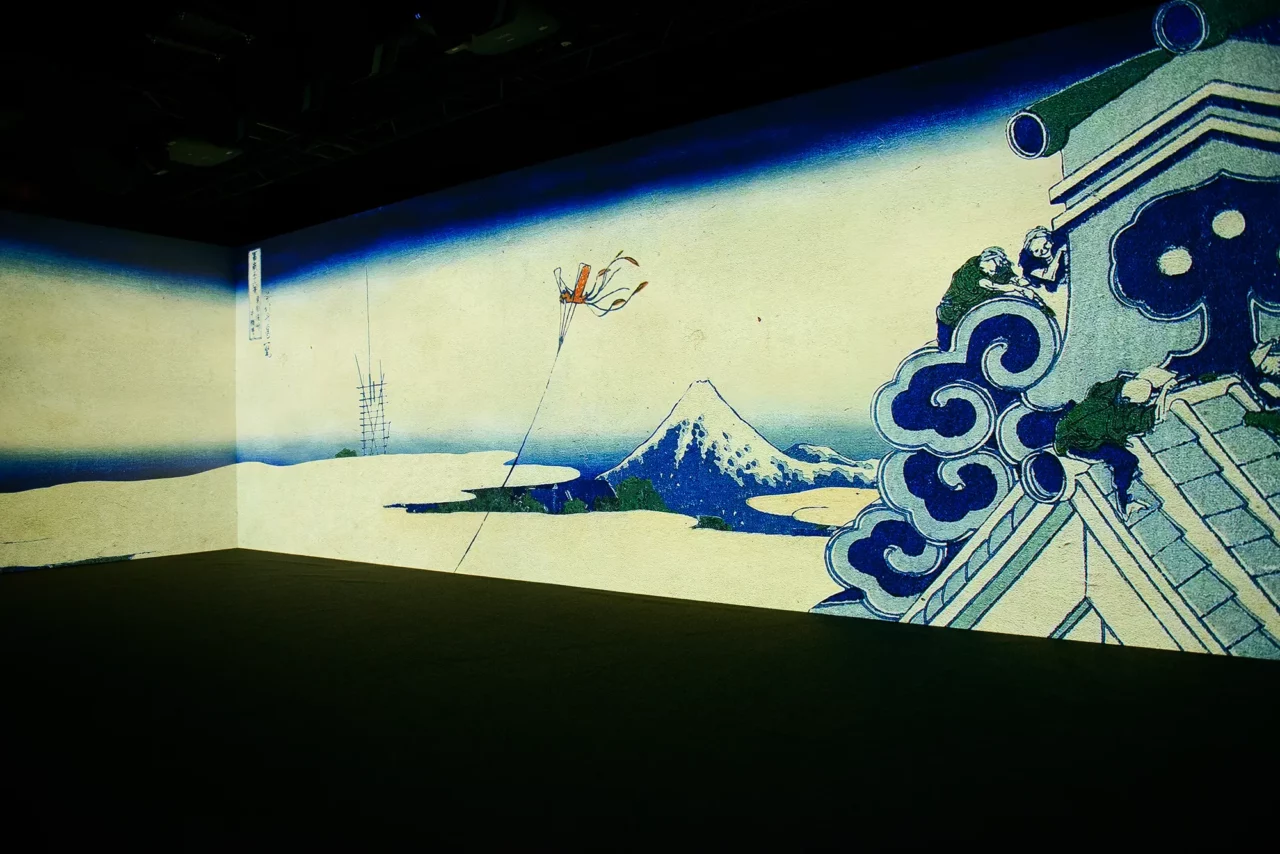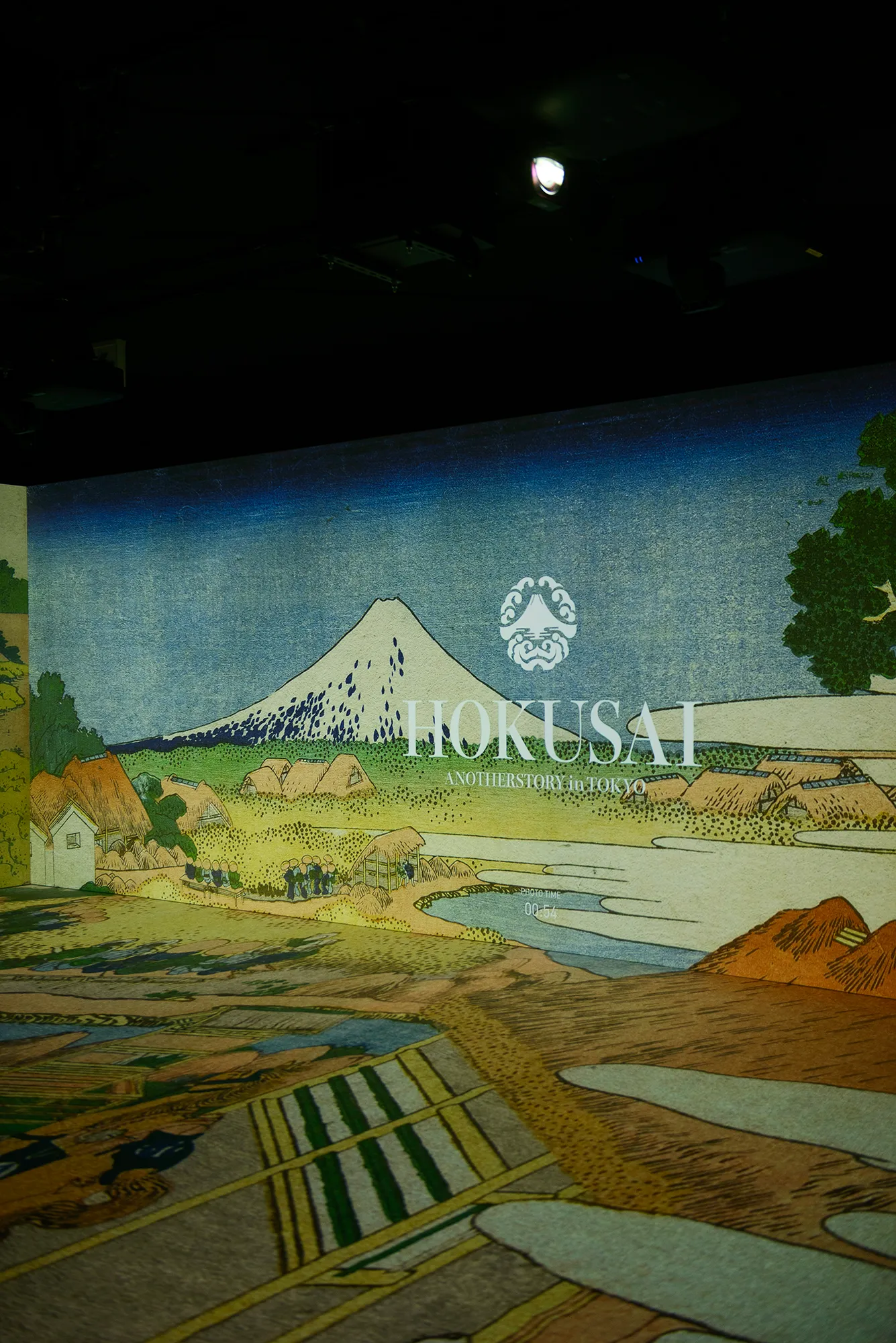On the 3rd floor of Tokyu Plaza in Shibuya, ‘HOKUSAI: ANOTHER STORY in TOKYO’ invites you to experience a reimagined vision of Katsushika Hokusai’s ‘Thirty-Six Views of Mount Fuji.’ Through a captivating fusion of stunning visuals, sound, wind, and vibrations, this immersive exhibition brings Hokusai’s timeless art into the modern world like never before.
INDEX
Nakajima Expresses His Respect: “I Have Great Respect for Hokusai-senpai“
Katsushika Hokusai, one of Edo’s most celebrated ukiyo-e masters and a globally recognized figure, redefined art with his iconic ‘Thirty-Six Views of Mount Fuji.’ This timeless masterpiece has been brought to life in a groundbreaking immersive digital art experience, blending ultra-high-definition visuals with interactive tactile sensations. At the press event just before the exhibition’s grand opening, singer and actor Kenji Nakajima expressed his admiration, saying, ‘Hokusai’s work is well-known worldwide, but our generation is eager to share our own expressions with the global stage, so I truly respect ‘Hokusai-senpai.'”
Nakajima also shared his excitement for the exhibition, commenting, ‘Hokusai is a national treasure and a legendary artist whose legacy lives on in Japan’s history. It’s thrilling to see his masterpieces reimagined through modern technology, creating new art that speaks to people of all ages, from children to international audiences, without the need for words.'”
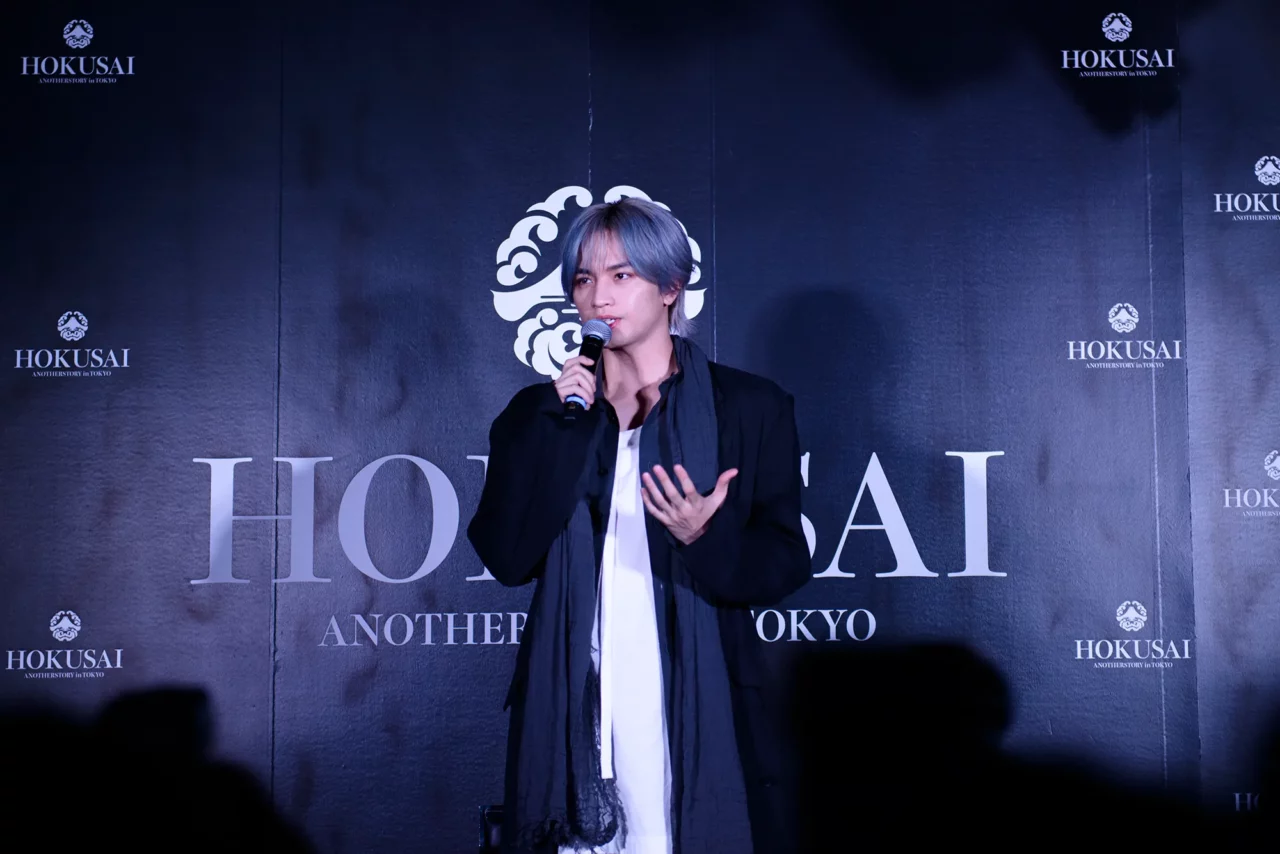
At the press event, collaboration artists COIN PARKING DELIVERY, who contributed pieces to the exhibition, and GOMA, currently working on artworks to be unveiled on April 25, also shared their thoughts.
COIN PARKING DELIVERY expressed, “When I was first invited to participate, I was truly excited because I had once created my own interpretation of ‘Thirty-Six Views of Mount Fuji.’ For this project, I translated the elements Hokusai originally captured with woodblock lines into brush strokes, and added new motifs using silkscreen printing. My aim was to express the contrast between today’s world and what Hokusai envisioned.”
GOMA added, “Experiencing the exhibition, I felt like I had slipped back in time to Hokusai’s era, thanks to the cutting-edge technology. The scanning technique that kept the colors and lines flawless even when magnified was astonishing. And when I stepped into ‘Hokusai’s Room’—one of the exhibition spaces—the vibrations and sounds from the floor gave me a sense of tranquility, almost like a sound massage.”

INDEX
Hokusai: A Pioneer Designer and Influencer
Hokusai, who produced over 30,000 works across various genres before his death at the age of 90, is explored in the exhibition’s prologue. The panel display offers a deep dive into who Hokusai was, revealing lesser-known stories and shedding light on his personal journey.

Hokusai was a versatile ukiyo-e artist, creating works across various genres, from landscapes and portraits of beautiful women to depictions of yokai. He was also a multi-talented creator, producing book illustrations, accessories, crafts, textiles, and even packaging designs.
As the creator and producer of Hokusai Manga, he not only conceived, wrote, and illustrated the book but also oversaw its publication. Additionally, he was a designer and editor, compiling kimono patterns in Shingata Komon Chō.
The iconic ‘The Great Wave off Kanagawa’ from Thirty-Six Views of Mount Fuji is said to have inspired Claude Debussy’s symphonic poem La Mer. In 1998, LIFE magazine selected him as the only Japanese figure in their list of ‘100 People Who Made Great Achievements in the Last 1000 Years.’
With such intriguing panels on display, the prologue will serve as a compelling introduction to the life and work of the artist, Hokusai.
INDEX
Immersing Yourself in the Landscapes Hokusai Saw
After moving through the prologue, enter the ‘Earth Room.’ Here, you can not only experience the world of Thirty-Six Views of Mount Fuji through stunning visuals and sound, but the Haptic Floor, which vibrates in response to the imagery and audio, gives you the sensation of walking along water or crossing a bridge. Did Hokusai begin his day with early morning location scouting? Centered around Mount Fuji, he likely found joy in capturing the natural landscapes and the movement of people in the foreground. In this room, you’ll step into the very scenery Hokusai witnessed, immersing yourself in the experience as you follow in his footsteps.
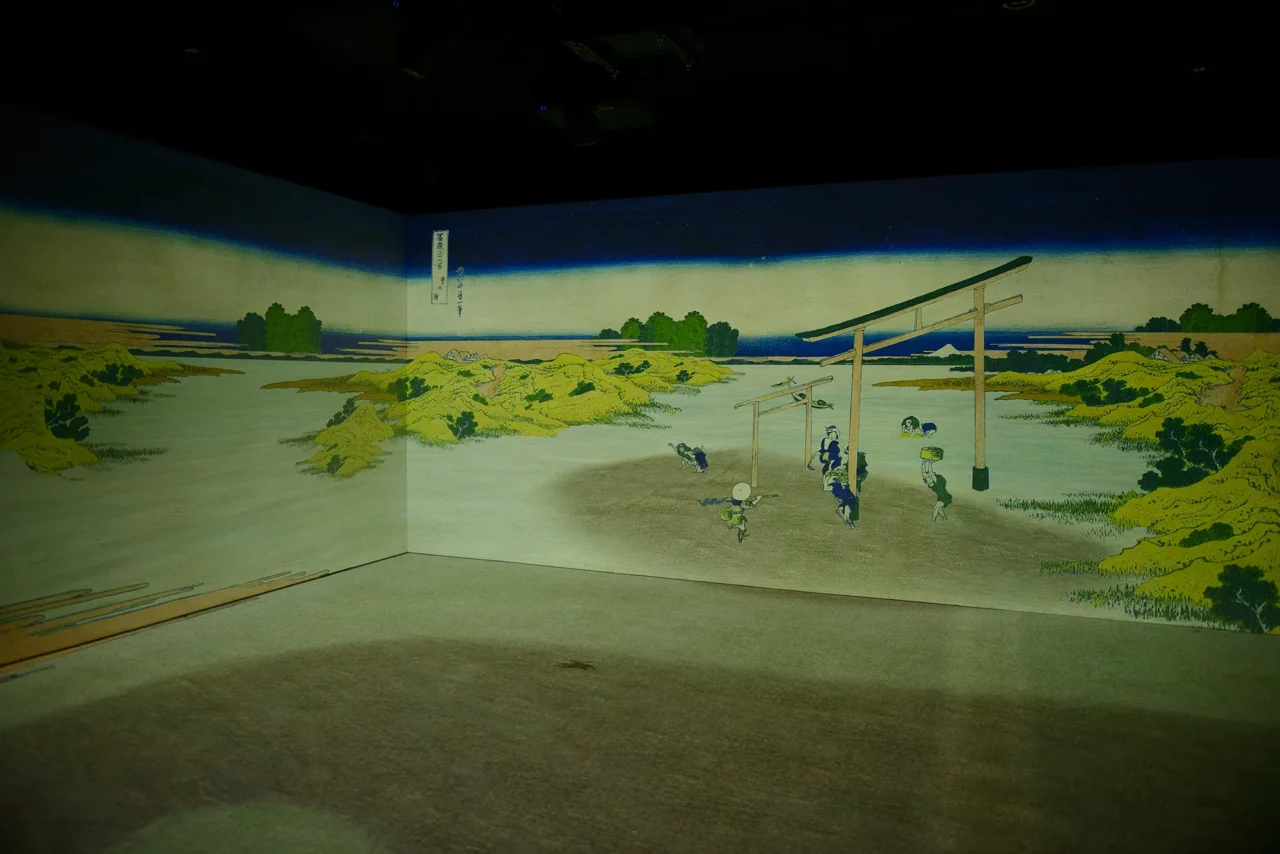

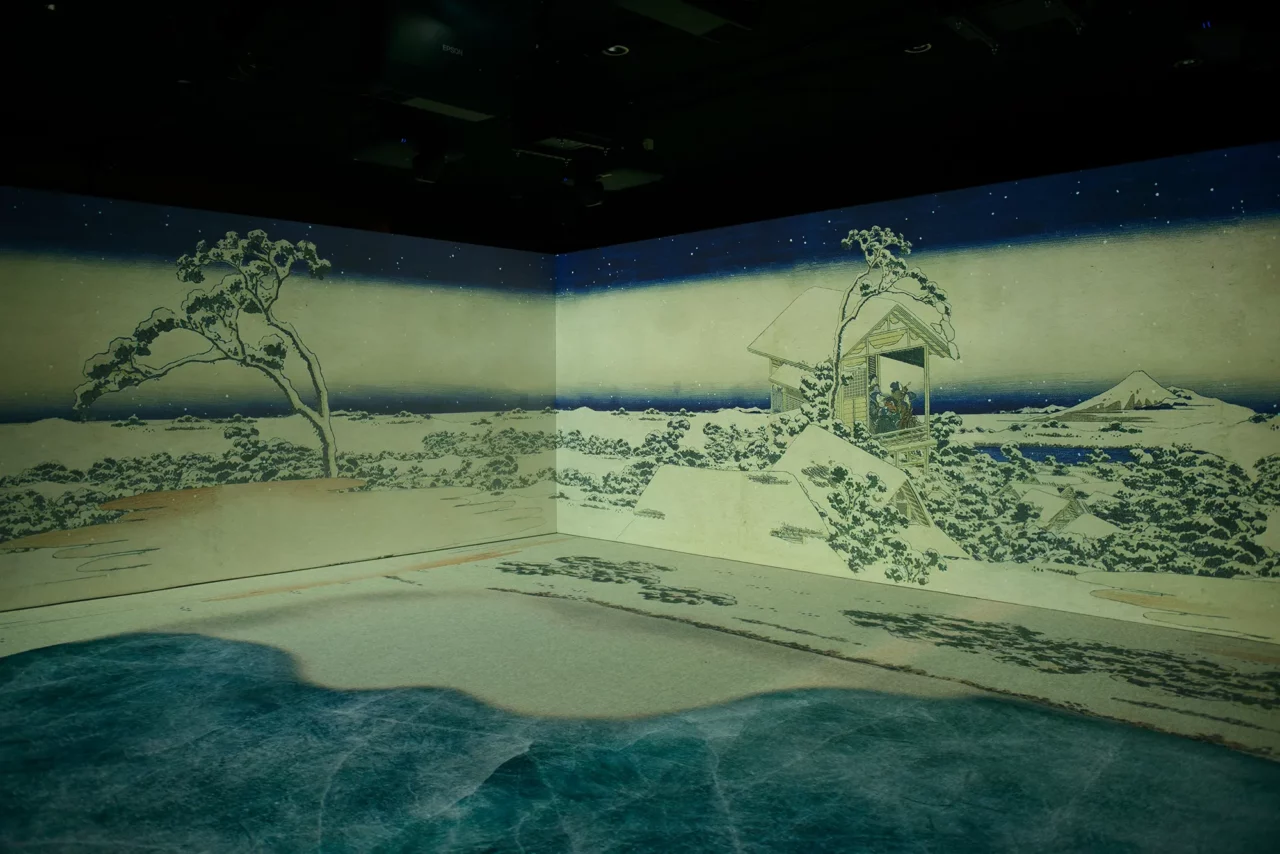
Exiting the ‘Earth Room,’ you enter the ‘Light Room.’ Here, you can observe the three-dimensional quality of ukiyo-e and the texture of washi paper beneath the warm glow of bamboo lanterns. As you adjust to the soft brightness reminiscent of Edo-period lanterns, the experience invites you to imagine how people of that time admired ukiyo-e in the intimate, flickering light.
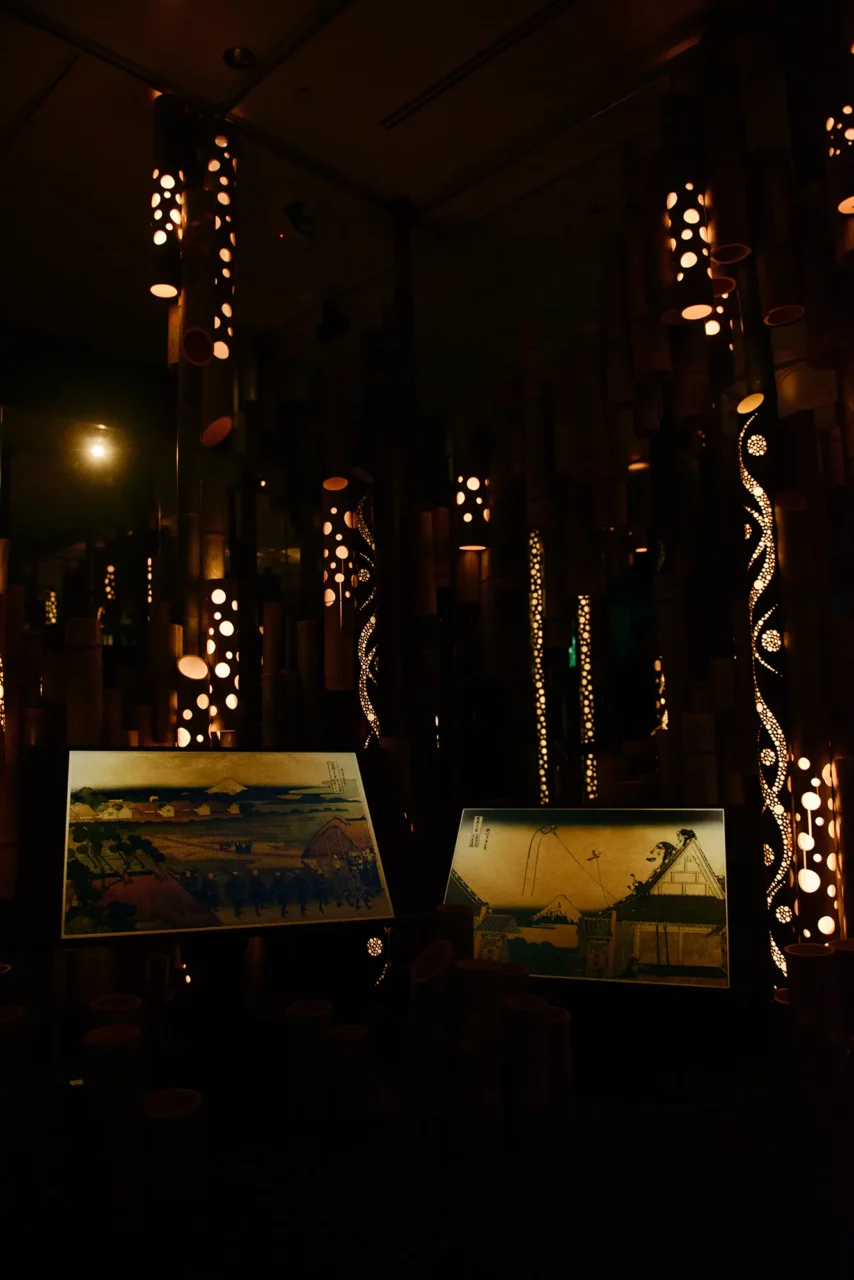
INDEX
The Wind Bridging Edo and the Present
In the following ‘Wind Room,’ state-of-the-art wind control technology is used to recreate the breezes that Hokusai, a passionate traveler, must have experienced. Eight selected scenes from Thirty-Six Views of Mount Fuji allow visitors to feel the wind and follow Hokusai’s journey from Tōtōmi and Suruga (modern-day Shizuoka Prefecture) to Kōshū (Yamanashi), from Edo to the shores of Kisarazu (Chiba).
The views of Mount Fuji from different locations each offer a unique perspective. As you feel the wind, you can virtually travel through these regions, experiencing Fuji’s ever-changing form from various angles in the Kanto, Kōshin’etsu, and Enshū areas—revealing its exceptional diversity.

